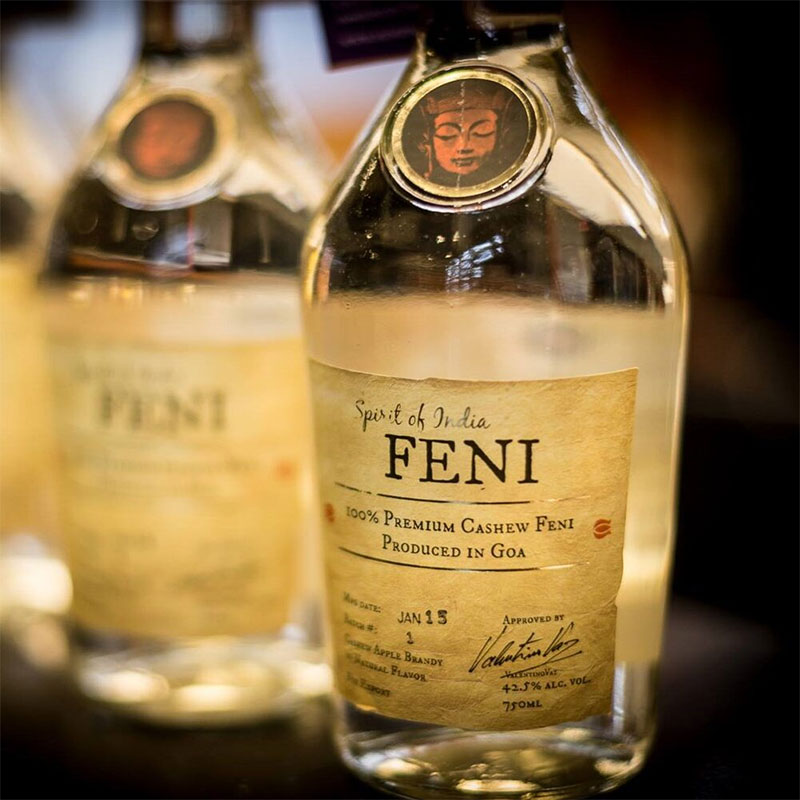The word comes from Sanskrit and means foam, probably indicating that which is formed when stirring in the glass or even more likely that which is formed during the process of creating the distillate. The alcohol content varies between 43 and 45% in South Goa, to the lowest in North Goa.
In its preparation, cashew feni involves the harvesting of the ripe fruits, which, deprived of the seeds, fall into a special rock container prepared in a specific area under the tree.
They are then subjected to pressing, a temple is pressed with the feet similar to grapes.
The pulp is staked by hand also with the help of a large boulder placed above it. The juice is then placed in terracotta containers or, for greater convenience, in plastic bags, semi-buried in the ground, where fermentation takes place, without the addition of exogenous yeasts, for several days.
Distillation takes place through rudimentary copper stills, which involve the use of a large pot at the base for boiling the liquid and recently the use of a copper coil immersed in cold water for condensation.
The distillation is triple, the first distilled liquid is called urrak, with an alcohol content of around 30 degrees and is redistilled with the addition of cashew juice with the result of obtaining a spirit of around 40/42 alcohol degrees and which It is called cazulo or cajulo.
It is then distilled again with urrak to give life to the final distillate of around 45 alcohol degrees and finally called Feni. However, this triple distillation spirit is consumed less than the one obtained after the second distillation, cazulo, because it is considered too alcoholic.
Cashew Feni is made from February to May.
















